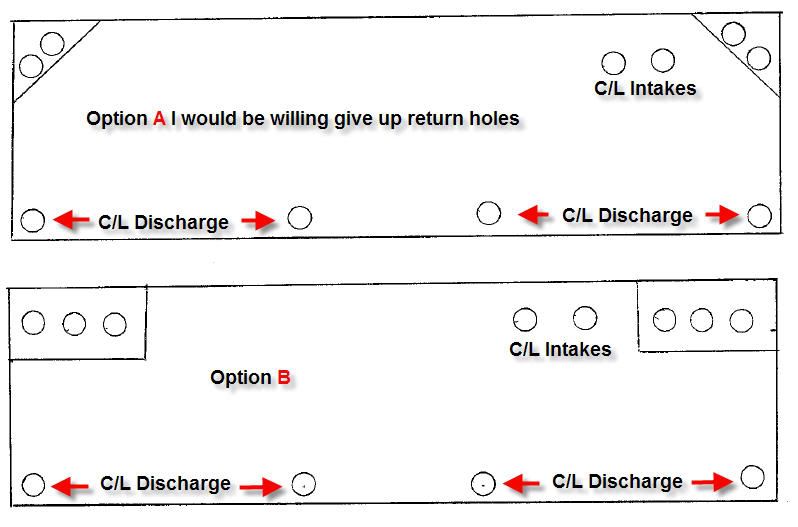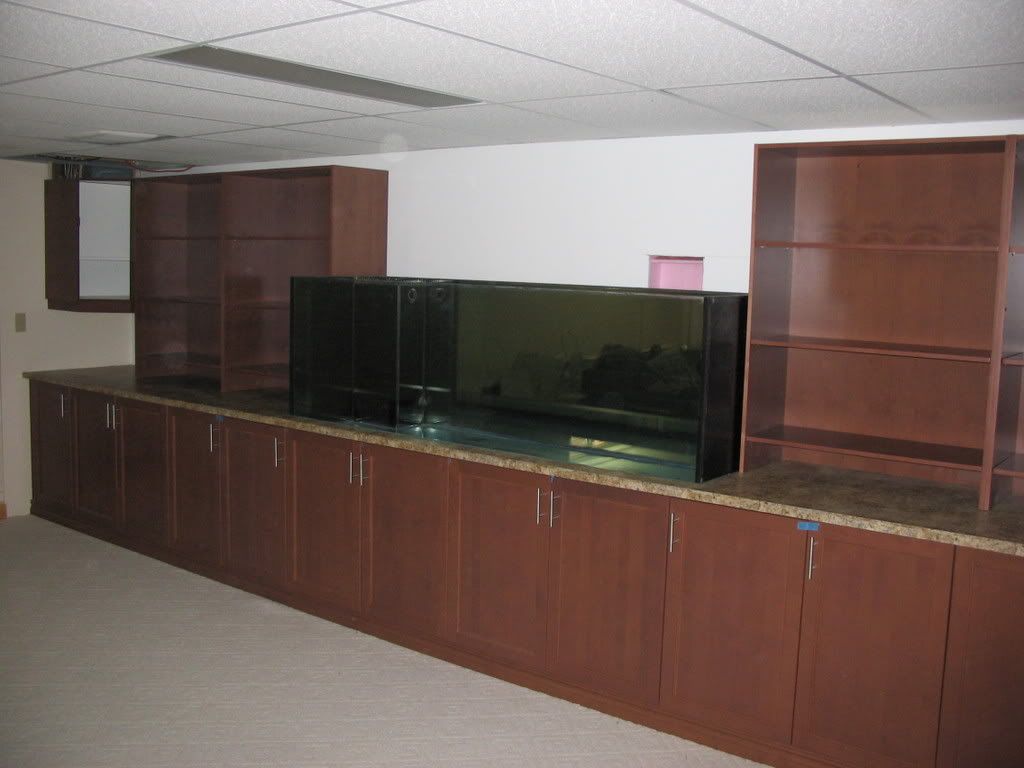
 |
|
#1
|
|||||
|
|||||
|
All,
I'm looking for some feed back on my tank design before I submit it to the manufacturer. Comments / Concerns? 
__________________
Robb |
|
#2
|
|||||
|
|||||
|
dims?
|
|
#3
|
|||||
|
|||||
|
Sorry about that: 84"x24"x30" High
__________________
Robb |
|
#4
|
|||||
|
|||||
|
Have you considered external overflows? I currently have one, and LOVE the fact that it doesn't take any space in the tank (and it looks better, IME).
But of the two choices you've given, I'd pick #2, simply because it would provide more surface skimming. |
|
#5
|
|||||
|
|||||
|
I can't do externals, the new one is replacing this one, would have been nice though.

__________________
Robb |
|
#6
|
|||||
|
|||||
|
Agree with Drew. Dual overflows on the back of the tank would be fantastic.
Also with #1 if you ever have to fish something out of the overflow or need to put your hand in for any reason, it could be a right royal pita. Last edited by muck; 12-17-2008 at 08:48 PM. |
|
#7
|
|||||
|
|||||
|
Quote:
Good point, didn't think about having to get my fat arms in there..
__________________
Robb |
|
#8
|
|||||
|
|||||
|
Quote:
|
|
#9
|
|||||
|
|||||
|
I vote for 'B', the overflows would take up a bit more space but would be more efficient and easier to work with. My tank has a triangular overflow and it's pretty tight. I also assume there is eurobracing not shown in the picture, the eurobracing on my tank makes the overflow even tighter.
JMO |
|
#10
|
|||||
|
|||||
|
Do you need two overflows? I know it seems to be common practice to run two on larger tanks and correct me if I'm wrong, but wouldn't you get better surface skimming with one overflow? Reasoning for this is that a single overflow alone will bring in twice the water as an overflow in a dual setup. This will result in a higher water velocity on the top surface and therefore greater surface tension which to me would suggest better surface skimming.
In addition you would run your return on the opposite side to create a general flow pattern towards the overflow which should produce a more efficient turnover. Plus you have more defined upstream and downstream areas which can be beneficial when keeping different types of corals. Single overflow boxes have been common practice for the tanks I build and I've always had good results. More cubic tanks are a little different but for the longer narrow tanks a single overflow and return on the opposite just makes sense to me. |